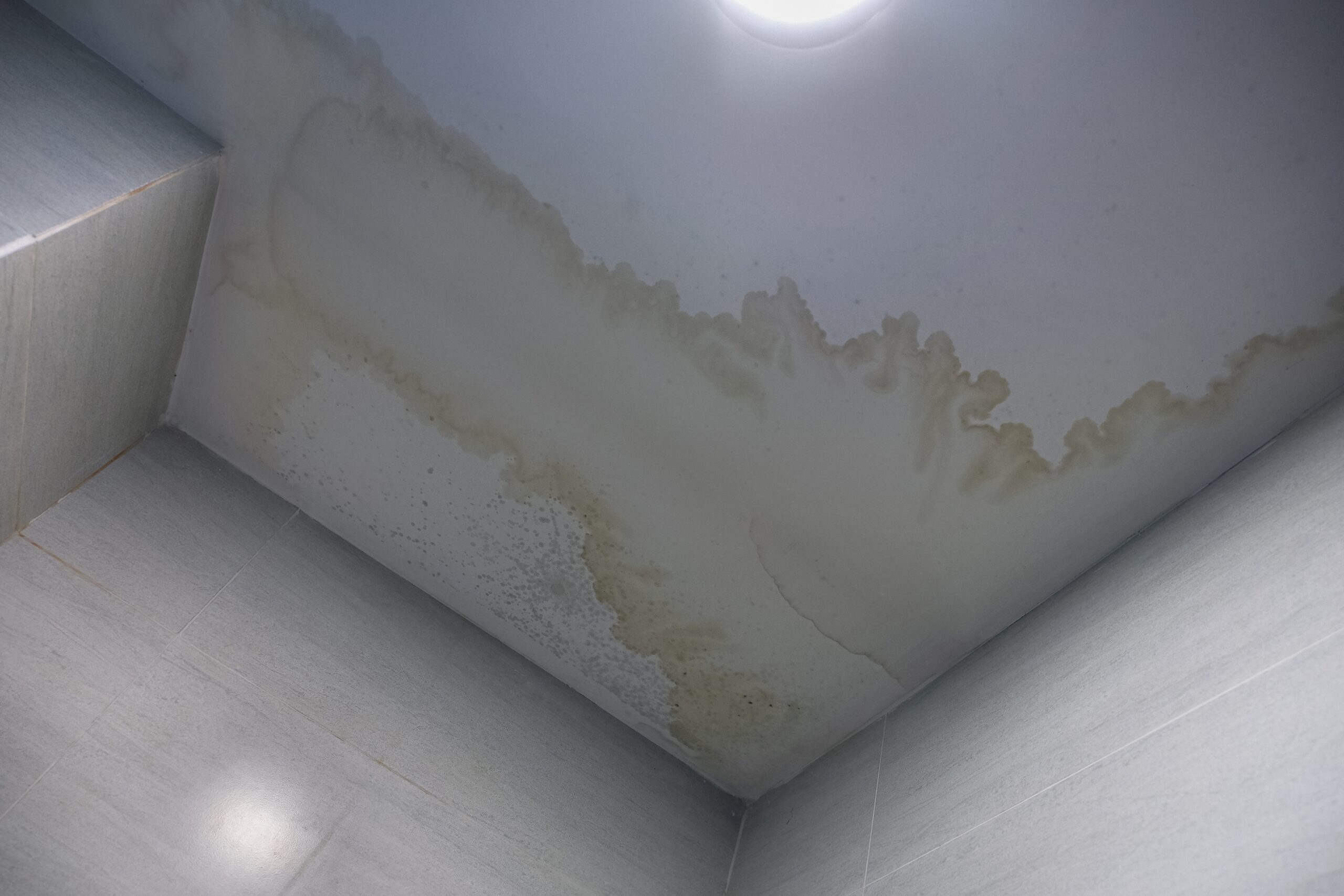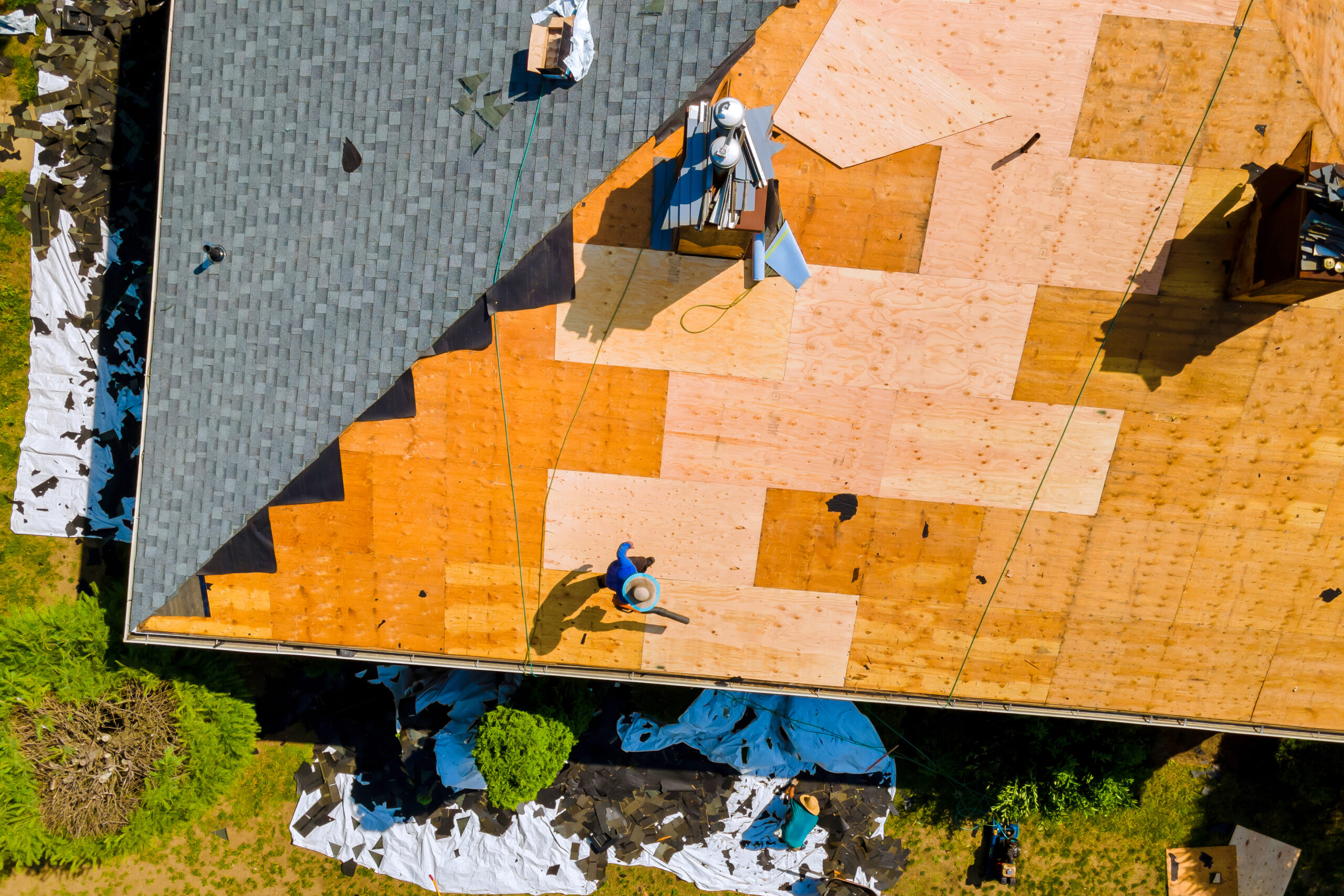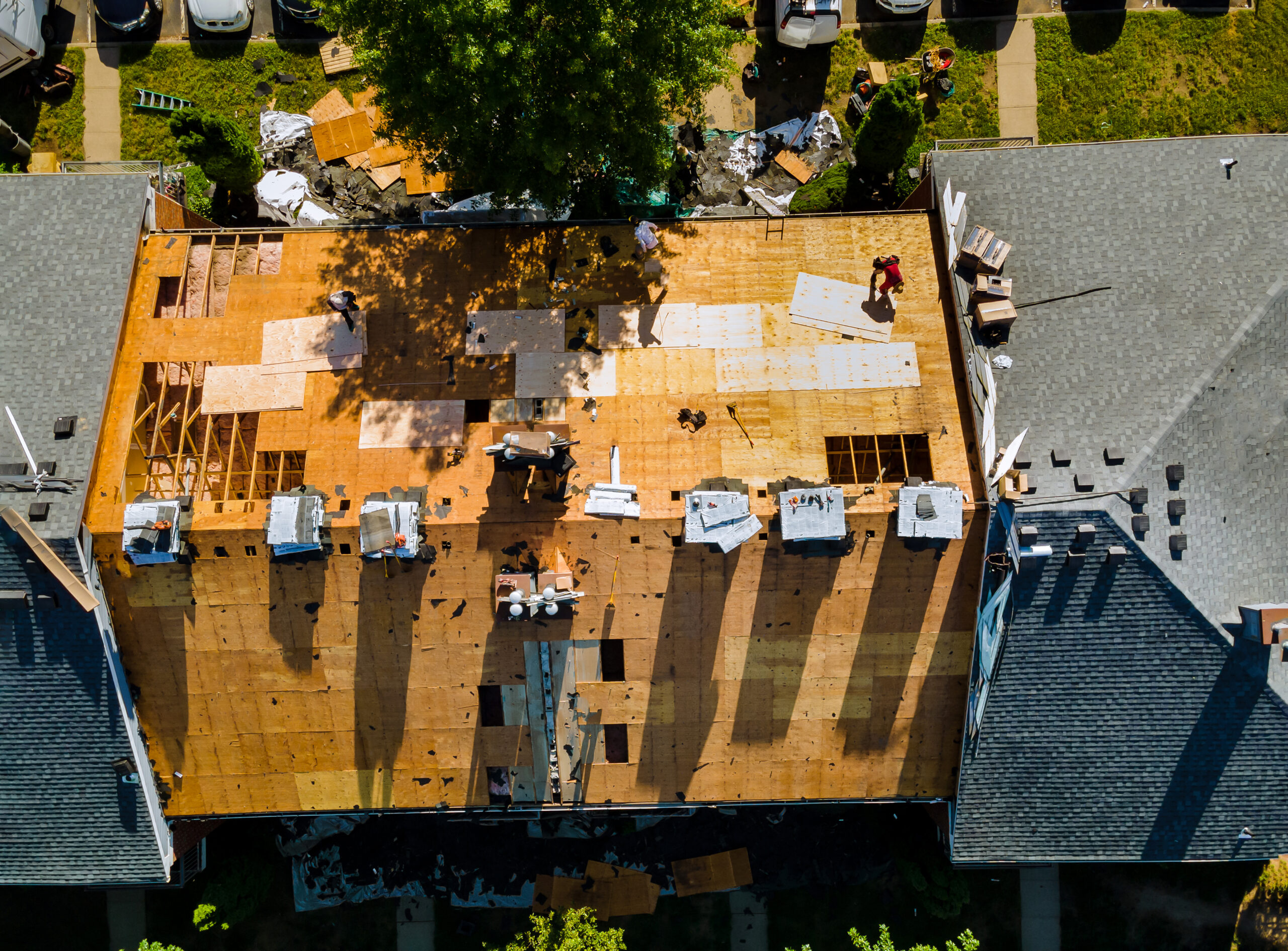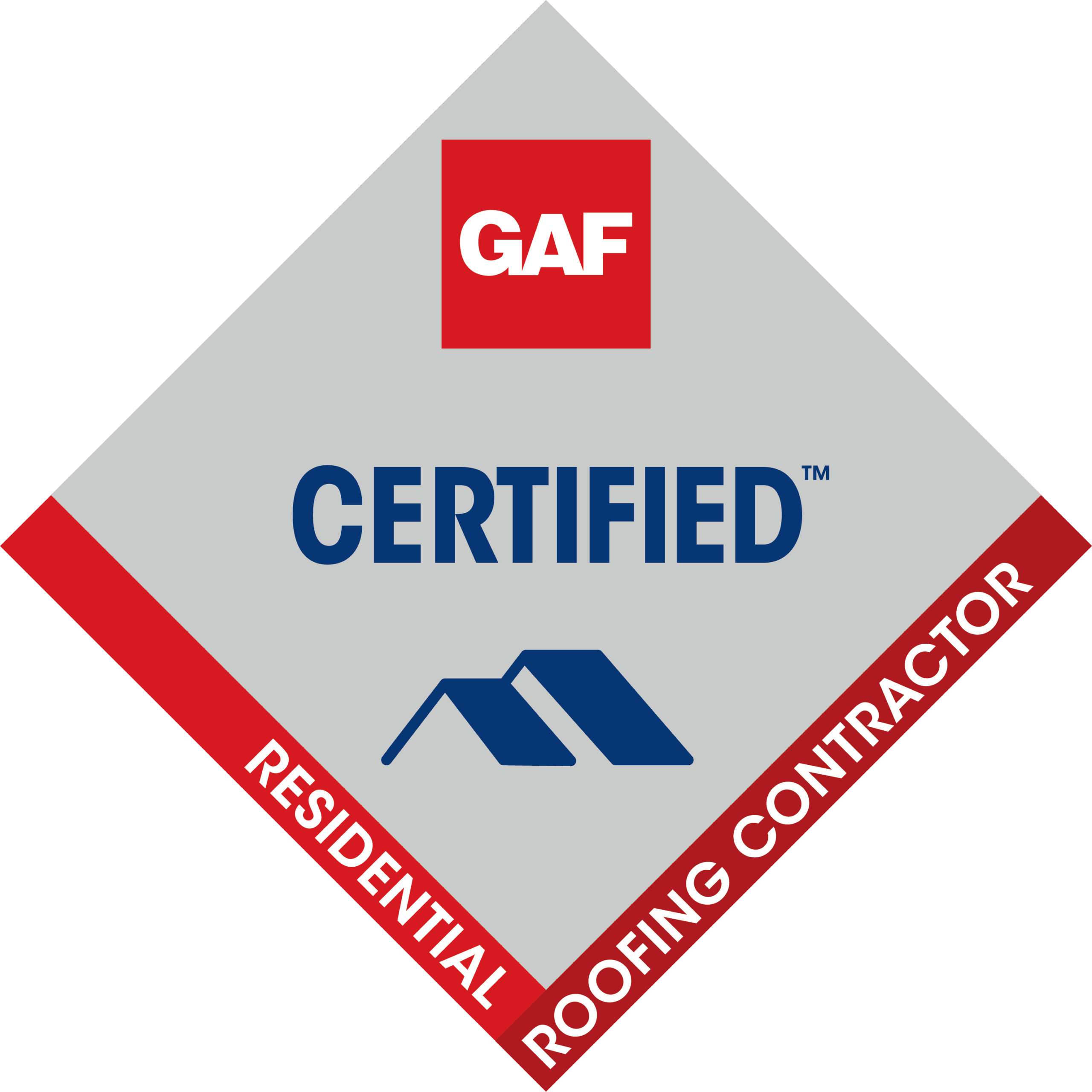It’s a sound every homeowner dreads: the steady, rhythmic drip…drip…drip that signals water has found its way inside your home. Or perhaps it’s not a sound at all, but a faint, brownish ring that appears mysteriously on your ceiling, growing slightly larger with each passing storm. A roof leak is more than just an annoyance; it’s a direct threat to your home’s structural integrity, your family’s health, and your peace of mind.
The good news is that most leaks don’t start as a sudden waterfall in your living room. They often begin with subtle clues, sending out early warning signs long before major damage occurs. The key is knowing what to look for.
At NoHasslePros, we believe that dealing with a potential roof leak shouldn’t be a complicated, high-stress ordeal. That’s why we’ve streamlined the process with our hassle-free, online roofing quotes. To help you catch problems early, we’ve put together this guide to the top five early warning signs of a roof leak and the simple steps you should take next.
Sign #1: Unsightly Water Stains on Ceilings or Walls
This is the classic, most recognizable sign of a roof leak. That discolored patch on your ceiling is the final destination for water that has traveled from your roof, through your attic, and into your living space.
- What to look for: Don’t just look for a dark, wet spot. Old leaks often leave behind a yellowish or brownish ring, similar to a coffee stain. The center might be dry, but the ring indicates that water was once there and will likely return. Pay close attention to ceilings on your top floor, corners where walls meet the ceiling, and around fixtures like lights and ceiling fans.
- Why it’s a warning: A water stain means that a leak has been active long enough for water to soak through roofing materials, insulation, and drywall. The leak itself could be directly above the stain or many feet away, as water can travel along rafters and joists before finding a place to drip down.
Sign #2: Musty Odors or Visible Mold/Mildew
Sometimes you can smell a leak before you can see it. A persistent, musty, earthy odor, especially in your attic or top-floor closets, is a major red flag for hidden moisture.
- What to look for (or smell for): If you notice a damp smell that doesn’t go away, it’s time for a closer look. Safely inspect your attic with a flashlight. Look for damp or darkened areas on the underside of the roof decking, wet insulation, or the telltale black or green splotches of mold and mildew growth.
- Why it’s a warning: Mold and mildew can only grow where there is a consistent source of moisture. Their presence is definitive proof of a water issue, whether it’s from a slow, seeping leak or poor attic ventilation trapping moisture. This not only threatens your home’s structure with rot but can also pose a significant health risk to your family.
Sign #3: Damaged or Missing Shingles
Your roof’s shingles are its armor. When that armor is compromised, your entire home is left vulnerable. It’s crucial to occasionally inspect the exterior condition of your roof.
- What to look for: You can often do this safely from the ground with a pair of binoculars. Look for shingles that are buckled, cracked, or curling at the edges. Pay special attention after a heavy windstorm for any missing shingles, which will look like dark, bare patches on your roof.
- Why it’s a warning: Curling or clawing shingles are a sign of advanced age and are easily caught by the wind, leading to blow-offs. Cracked or missing shingles are like an open door, allowing water to get directly to the underlayment and roof deck below. This is one of the most common causes of roof leaks.
Sign #4: Granules in Your Gutters
When you clean your gutters, do you notice a collection of coarse, black sand-like material? Those are asphalt granules, and they belong on your shingles, not in your downspouts.
- What to look for: After a heavy rain, check the area where your downspouts discharge. A buildup of these tiny granules is a clear signal of shingle deterioration.
- Why it’s a warning: These granules serve as a protective layer, shielding the asphalt in the shingle from the sun’s damaging UV rays. As they wear away, the shingle becomes brittle, weak, and much more susceptible to cracking and leaking. While some granule loss is normal for a brand-new roof, a significant accumulation from an older roof means it’s nearing the end of its functional life.
Sign #5: Damaged Flashing and Clogged Gutters
Sometimes, the leak isn’t in the main field of shingles but at the points where your roof meets another surface. These intersections are protected by metal strips called flashing.
- What to look for: Look at areas around your chimney, skylights, and vent pipes, as well as in the valleys where two roof planes meet. Damaged flashing might look bent, rusted, or have gaps where the sealant has deteriorated. Also, keep an eye on your gutters. If they are clogged with leaves and debris, water can back up and flow underneath the edge of your roof.
- Why it’s a warning: Damaged flashing creates a direct channel for water to enter your attic. Clogged gutters are equally dangerous, forcing water to pool against the fascia board and roof decking, where it can cause rot and seep into your home.
You’ve Spotted a Sign—Now What?
Discovering a potential leak can be stressful, but taking the right steps can prevent further damage and make the repair process smoother.
- Mitigate Interior Damage: If you have an active drip, place a bucket underneath it. If the drywall is bulging, it may be holding a significant amount of water. You can carefully puncture the center of the bubble with a small tool to release the pressure in a controlled way into your bucket. Move any valuable furniture or electronics out of the affected area.
- Avoid a DIY Roof Adventure: Do not go on the roof yourself. Walking on a potentially damp or structurally compromised roof is extremely dangerous and can cause more damage. A safe visual inspection from the ground is all you should attempt.
- Get a Professional Assessment—The Hassle-Free Way: This is where you need an expert, but you don’t need the headache of scheduling multiple appointments and waiting around for salespeople. The old way of getting a roofing quote is outdated and inconvenient.
This is precisely why NoHasslePros exists. We’ve revolutionized the process. Instead of waiting for an in-person visit, you can get a fast, accurate, and transparent roofing quote entirely online. Our advanced system uses high-resolution aerial imagery and proven data to assess your roof and provide a detailed estimate for repair or replacement right from your computer or phone.
Don’t let the dripping dread turn into a full-blown disaster. If you’ve noticed any of these five warning signs, it’s time to take action. Visit NoHasslePros.com today to get your hassle-free online roofing quote. It’s the simplest, fastest, and most modern way to protect your home and your peace of mind.





